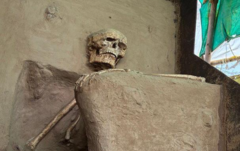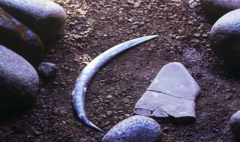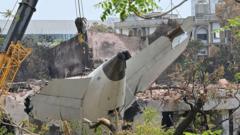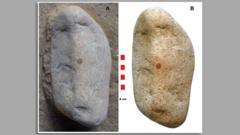Despite its historical significance, an ancient human skeleton uncovered in Vadnagar, India, still languishes in temporary shelter six years post-excavation, as bureaucratic disputes hinder its transfer to a museum. Discovered by archaeologist Abhijit Ambekar in 2019, the skeleton is believed to date back to the Solanki dynasty and is among the last remaining vestiges of a rich historical era in the region. Ongoing contention about its management continues to delay the skeleton's housing in a facility designed for showcasing such artifacts, leaving locals and historians concerned for its preservation and the potential tourism it could attract.
Left to Decay: Ancient Skeleton from India Stuck in Bureaucratic Limbo

Left to Decay: Ancient Skeleton from India Stuck in Bureaucratic Limbo
A 1,000-year-old skeleton in Vadnagar, India, remains without a permanent home due to government gridlock six years after its discovery.
The skeleton of a man, thought to be in his forties, was excavated sitting cross-legged in a meditative posture, and remains a remarkable discovery that highlights ancient burial practices. Years of governmental discussions have yet to yield a resolution, with the skeleton currently exposed to environmental elements in a makeshift tent. As the town of Vadnagar boasts a newly inaugurated $35 million Archaeological Experiential Museum, it faces criticism for failing to include the skeleton in its exhibits, raising questions about preservation practices and regional heritage management.
Furthermore, Vadnagar's long history reveals traces of civilizations dating over 2,000 years, positioning the skeleton as a vital connection to India's rich past. Local residents and experts alike express frustration over the delays, advocating for the skeleton to find a proper home where it can be secured and studied to enhance understanding of the region’s ancient culture. The situation reflects broader issues within the cultural heritage sector, where logistical hurdles often impede the preservation and public dissemination of invaluable artifacts.
Furthermore, Vadnagar's long history reveals traces of civilizations dating over 2,000 years, positioning the skeleton as a vital connection to India's rich past. Local residents and experts alike express frustration over the delays, advocating for the skeleton to find a proper home where it can be secured and studied to enhance understanding of the region’s ancient culture. The situation reflects broader issues within the cultural heritage sector, where logistical hurdles often impede the preservation and public dissemination of invaluable artifacts.






















